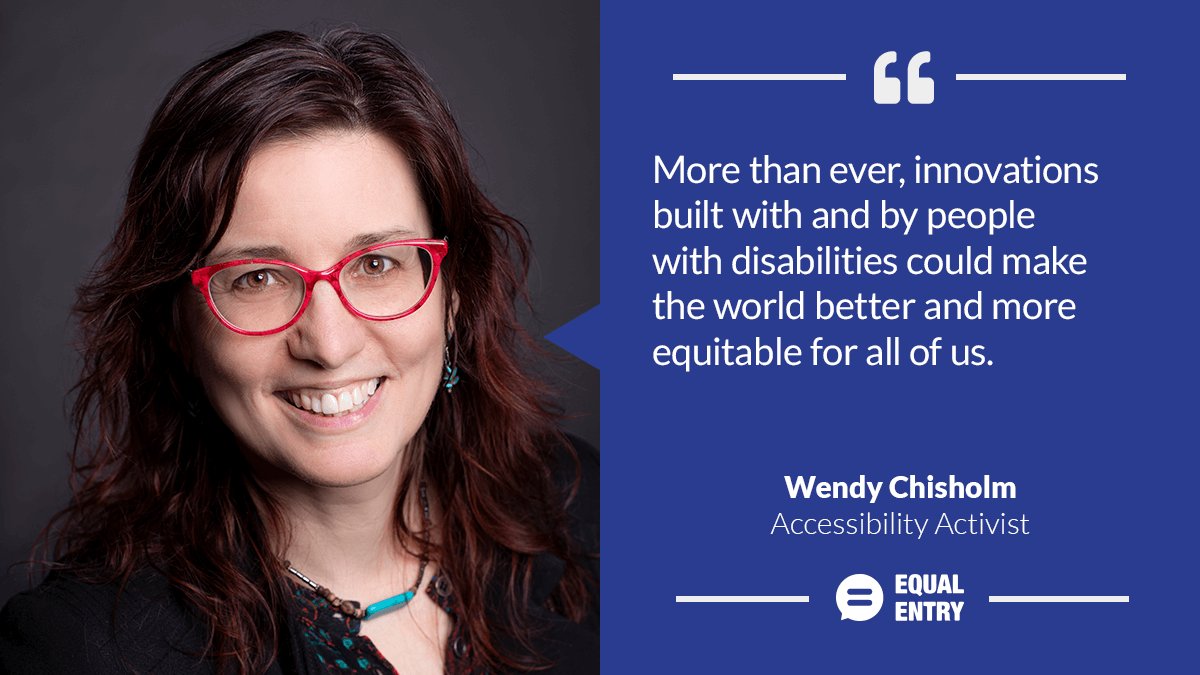Summary

Wendy Chisholm is a principal accessibility architect at Microsoft. She leads AI for Accessibility, a $25 million grant program that aims to accelerate the development of accessible and intelligent AI solutions that amplify human capability for the more than 1 billion people worldwide with a disability.
How did you get your start in accessibility?
When I was studying computer science and psychology as an undergrad, one of my psychology professors asked me to tutor a student in statistics. I agreed. When I met him, I realized he was blind and that I had no idea what I was doing.
We got really creative and used LEGO to create tactile versions of bar charts and I poked a pin through the back of a textbook page to make a raised line drawing of a scatter plot. It planted the seed of the question, “Isn’t there something computers could do?”
A few years later — after I’d graduated and became a computer programmer at the University of Chicago — I read an article about a professor who was making technology accessible to people with disabilities. Turns out it was Gregg Vanderheiden at the Trace Center at the University of Wisconsin which was only a couple of hours north. I started at UW that fall and worked as a research assistant for Gregg.
One of the projects I worked on was what was called the Trace Page Authoring Guidelines which became the basis for the Web Content Accessibility Guidelines 1.0. I then went on to edit WCAG 1.0 and have been working in accessibility since.
What excites you most about the proposals in the AI for Accessibility grant program? What do they say about the future of AI
I am most excited about the potential for leveraging technology to make the world more equitable — especially for shifting the employment numbers for people with disabilities which haven’t significantly shifted in 30 years.
As for the future? What I’m seeing indicates that we are in the midst of a data desert — people with disabilities are not equally represented in data sets or where we are we are not showing up in models.
As a proponent of how ‘design justice’ and stakeholder capitalism can contribute to a more equitable and sustainable world, what does design justice look like to you and how does AI factor in?
Design justice looks like designing any new technology WITH or BY people who will be impacted by the outcomes to increase the likelihood of creating technology that is accessible and promotes equitable outcomes for all.
Stakeholder capitalism looks like companies motivated to consider their impact on the environment and communities as equally as they consider the impact on shareholders; it means hiring a diversity of employees to ensure that design justice is woven into the fabric of a company; that companies aren’t extracting good ideas from communities and then profiting but that everyone benefits.
I believe that design justice is one method to help companies practice stakeholder capitalism — providing a way for communities to hold corporations accountable and for profits to benefit everyone involved in the collaborative design process. My hope is that design justice and stakeholder capitalism create new systems that are more equitable, inclusive, and accessible.
Sasha Costanza-Chock describes this beautifully in their book, Design Justice and the Design Justice Network has a variety of resources and ways to get involved. For more about Stakeholder Capitalism — which isn’t a new idea, just new to me — refer to Klaus Schwab’s book.
What is an accessibility barrier you would like to see solved?
Most of the smaller barriers that I’d pick all point back to the big barrier: ableism. It’s astounding that 98% of the top million home pages still have accessibility issues; that in some countries, 70% of people with disabilities are unemployed or underemployed; that only 1 in 10 people worldwide have access to the assistive technologies they need.
More than ever, innovations built with and by people with disabilities could make the world better and more equitable for all of us — as we’ve seen time and time again throughout history. I’d love to see companies choose to innovate with transdisciplinary teams that include people with disabilities so that future innovations are accessible and equitable at the alpha release.